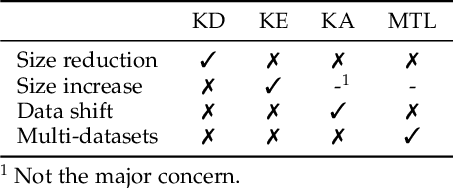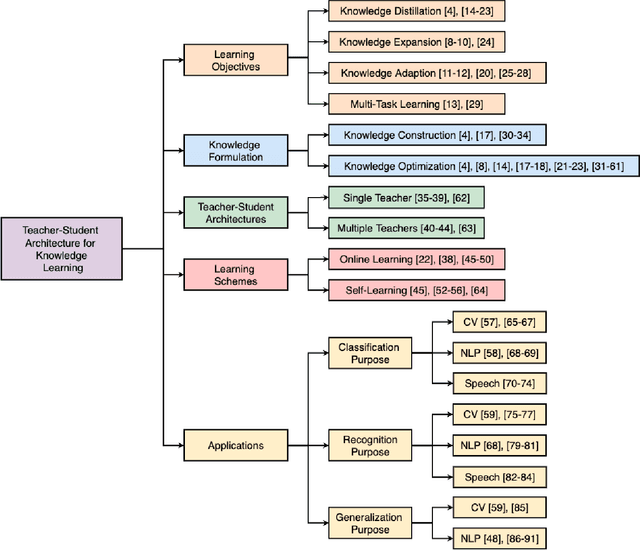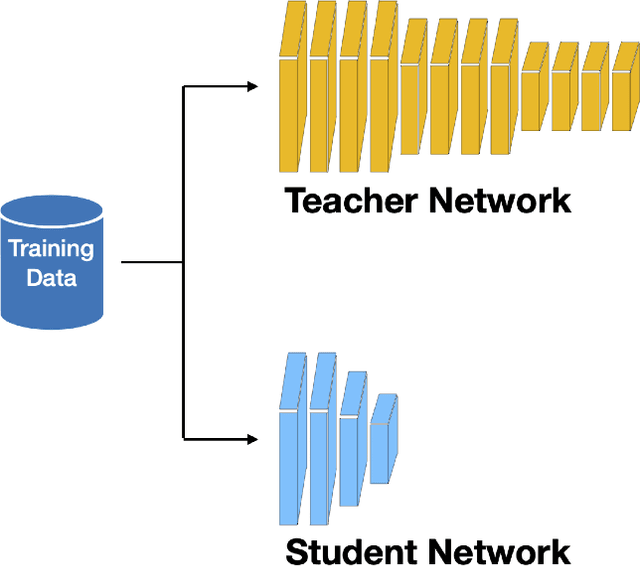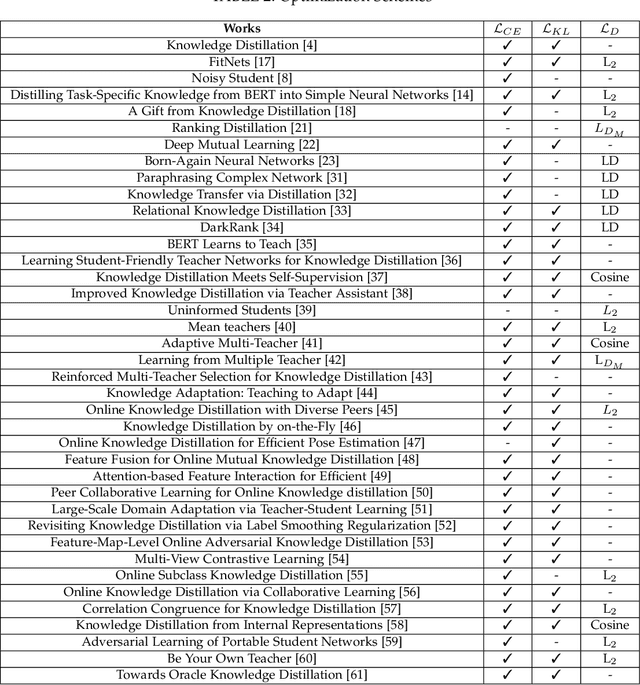Teacher-Student Architecture for Knowledge Learning: A Survey
Paper and Code
Oct 28, 2022



Although Deep Neural Networks (DNNs) have shown a strong capacity to solve large-scale problems in many areas, such DNNs with voluminous parameters are hard to be deployed in a real-time system. To tackle this issue, Teacher-Student architectures were first utilized in knowledge distillation, where simple student networks can achieve comparable performance to deep teacher networks. Recently, Teacher-Student architectures have been effectively and widely embraced on various knowledge learning objectives, including knowledge distillation, knowledge expansion, knowledge adaption, and multi-task learning. With the help of Teacher-Student architectures, current studies are able to achieve multiple knowledge-learning objectives through lightweight and effective student networks. Different from the existing knowledge distillation surveys, this survey detailedly discusses Teacher-Student architectures with multiple knowledge learning objectives. In addition, we systematically introduce the knowledge construction and optimization process during the knowledge learning and then analyze various Teacher-Student architectures and effective learning schemes that have been leveraged to learn representative and robust knowledge. This paper also summarizes the latest applications of Teacher-Student architectures based on different purposes (i.e., classification, recognition, and generation). Finally, the potential research directions of knowledge learning are investigated on the Teacher-Student architecture design, the quality of knowledge, and the theoretical studies of regression-based learning, respectively. With this comprehensive survey, both industry practitioners and the academic community can learn insightful guidelines about Teacher-Student architectures on multiple knowledge learning objectives.
 Add to Chrome
Add to Chrome Add to Firefox
Add to Firefox Add to Edge
Add to Edge